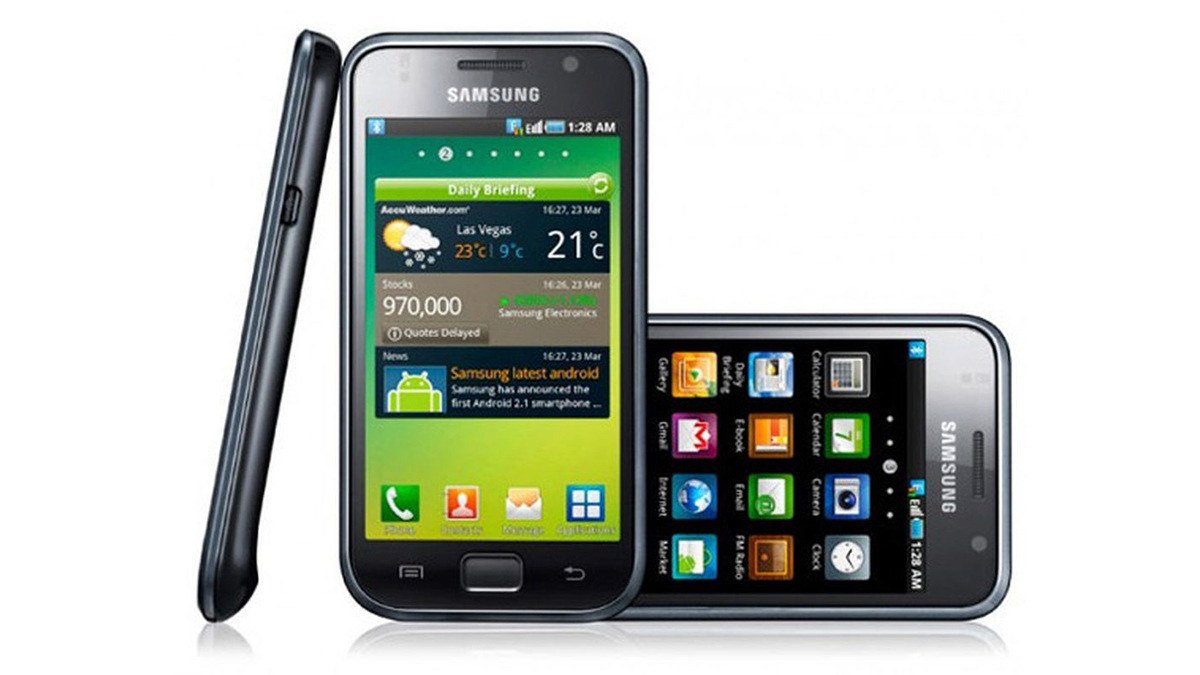Remembering the original Samsung Galaxy S: Setting the bar
Samsung probably didn’t know it at the time, but the Samsung Galaxy S — the 2010 original — would come to define its smartphone business for more than a decade. Mixing top specs with a solid design gave the Galaxy S an edge over competing Android phones of the day, which were a mish-mash of clunkers. Android hardware and software were still finding their footing, and the Galaxy S gave Samsung a platform on which to stand. And stand it did.
The Samsung Galaxy S was not a single phone. In fact, it was an entire family of phones with different versions spread amongst carriers around the world. There were at least four variants in the U.S. alone, one each for AT&T, Sprint, T-Mobile, and Verizon — and the differences were striking. For example, the Sprint version, called the Samsung Epic 4G, had a slide-out QWERTY keyboard and 4G, where the other models did not.
Let’s refresh your memory about the Samsung Galaxy S.
The Galaxy S at its core

The 4-inch Super AMOLED display defined the Galaxy S experience. It was among the largest screens available in 2010, and it impressed with its 800 x 480 resolution. Some might have complained about the PenTile technology of the screen, but it was brighter, more colorful, and more contrasty than the LCD panels on competing phones. Plus, it had Gorilla Glass, another luxury in 2010. A supply issue, however, caused some variants of the phone to ship with LCD screens. Those were known as the Samsung Galaxy SL.
Then there was the processor. The phone had a 1GHz “Hummingbird” chip inside (the ARM Cortex-A8 Exynos 3110), 512MB of RAM, and either 8GB or 16GB of storage. Few phones of the day boasted such a fast processor or such powerful graphics performance. The Hummingbird was built on a 45nm process. Today’s flagships have processors built on a 5nm process.
Samsung gave the Galaxy S a 5MP camera. Some models had a 1.3MP user-facing selfie camera, and some did not. The camera was solid, as was the app for shooting photos.
TouchWiz 3.0 defined the software experience. It was built on Android 2.1 Eclair and included seven home screens, widgets galore, and even social networking feeds such as MySpace.
The hardware itself was fairly compact and usable. It offered clutch features such as microSD card support (up to 32GB) and a headphone jack. It was “thin” at 9.9mm.
It sold for $399, a low price by today’s standards.
Critical reception

The Samsung Galaxy S was generally well-liked by the tech press. Media outlets lauded the display, the camera, and the two days of battery life. There was a more important metric by which the phone was measured. Sales.
Related: Samsung Galaxy S phones ranked
Samsung launched global sales of the Galaxy S on June 4, 2010, in Singapore. People lined up to get the phone, and Samsung said its carrier partner sold out of the device by the end of the first weekend. Samsung sold 24 million Galaxy S phones, with more than 10 million in sales during the first seven months of availability. It was a bonafide hit. Few other phones of the day were as popular.
The strong consumer reaction led Samsung to generate sequel after sequel. Samsung hit 100 million in device shipments by the time the Galaxy III rolled around in 2012 — allowing it to surpass Nokia as the world’s biggest seller of mobile phones.
The original S wasn’t without its problems. The sheer number of variants led to confusion in the market, and a bad GPS bug plagued the phone’s ability to quickly locate users. Despite these drawbacks, the S found its place in the market and set the bar for what an Android flagship should be.
Samsung’s success later begat another world-defining smartphone, the Galaxy Note.
Tip of the hat

Phones wouldn’t be where they are today without Samsung, and Samsung wouldn’t be where it is today without the Galaxy S. The latest entry to the Galaxy S line, the S21, is a world-leading piece of hardware that phone makers around the globe are angling to beat.
So, we at Android Authority wish the Samsung Galaxy S a happy 11th birthday and a tip of our collective hats.
source https://www.androidauthority.com/samsung-galaxy-s-1231887

Subscribe Our Newsletter

0 Response to "Remembering the original Samsung Galaxy S: Setting the bar"
Post a Comment